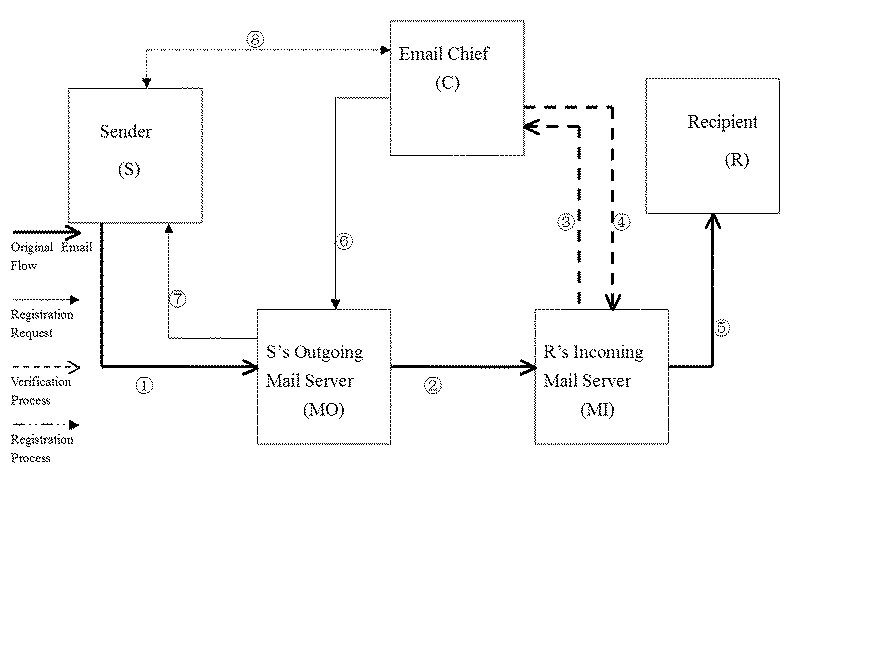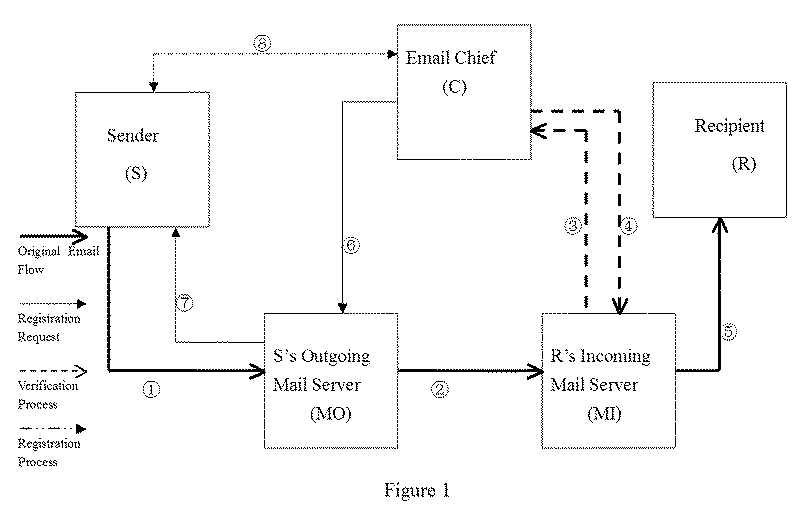Method and System for Using a Point System to Deliver Advertisement Emails and to Stop Spam
- Summary
- Abstract
- Description
- Claims
- Application Information
AI Technical Summary
Benefits of technology
Problems solved by technology
Method used
Image
Examples
Embodiment Construction
[0045] Description and Operation of Invention
[0046] The present invention will now be described with reference to the accompanying drawings, which are provided as illustrative examples of preferred embodiment of the present invention.
[0047]FIG. 1 depicts a preferred embodiment of a system performing the functions stated in the present invention. The system includes a sender's computer (S), a recipient's computer (R), the sender's SMTP email server (MO), the recipient's email server (MI), and the Email Chief (C) for registration / authentication purposes. The present invention can be deployed at the recipient's email server (M1) or at the recipient's email client software (R), and at the Email Chief (C). The Email Chief (C) has the function for registration, authentication, and maintenance of database.
[0048] The recipient's communications device may be any communications device capable of receiving electronic mail or instant messages, such as a computer running mail client software,...
PUM
 Login to View More
Login to View More Abstract
Description
Claims
Application Information
 Login to View More
Login to View More - R&D
- Intellectual Property
- Life Sciences
- Materials
- Tech Scout
- Unparalleled Data Quality
- Higher Quality Content
- 60% Fewer Hallucinations
Browse by: Latest US Patents, China's latest patents, Technical Efficacy Thesaurus, Application Domain, Technology Topic, Popular Technical Reports.
© 2025 PatSnap. All rights reserved.Legal|Privacy policy|Modern Slavery Act Transparency Statement|Sitemap|About US| Contact US: help@patsnap.com


